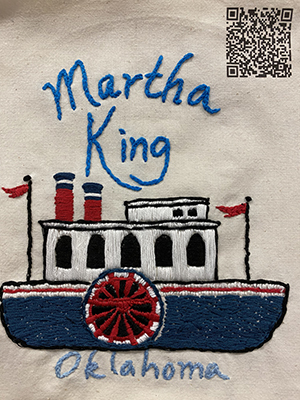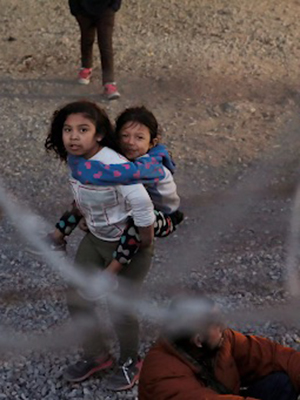Martha King
“My mother was Harriet Davis and she was born in Virginia, I don’t know who my father was. My grandmother was captured in Africa when she was a little girl. A big boat was down at the edge of a bay and the people was all excited about it and some of the bravest went up pretty close to look at it. The men on the boat told them to come on board and they could have the pretty red handkerchiefs, red and blue beads and big rings. A lot of them went on board and the ship sailed away with them. My grandmother never saw any of her folks again. When I was about five years old they brought my grandmother, my mother and my two aunts and two uncles to Tuskaloosa from Payettesville, Alabama. We crossed a big river on a ferry boat. They put us on the block and sold us. I can remember it well. A white man carried me off just like I was an animal or varmint or something. Said who will give me a bid on her. Old man Davis gave him $300.00 for me. I didn't have to work very hard until I was about ten years old. I started working in the field and I had to work in the weaving room too. We made all our own clothes. I spun and wove cotton and wool. We could stripe the cloth or check it or leave it plain. We also wove coverlets and jeans to make mens suits out of. Old Master and old Mistress had three boys, Eli, Billy and Dock. They had to go to war and old Mistress sure did cry. She said they might get killed and she might not see them any more. I wonder why all them white folks didn't think of that when they sold mothers away from their children. I had to be sold away from my mother.” – Martha King
 Brandie Garcia ’25
Brandie Garcia ’25
Enslaved people and immigrants have harvested U.S. crops since the 1600s. By 1933, 95% of California’s cotton fields were worked by Mexicans. When the workers organized and went on strike for higher wages (they were making 80 cents for picking 200 pounds of cotton per day), the farm owners accused them of being Communists and called for mass deportation. Organizers were arrested while "men, women and children were driven like cattle from their habitations by armed bands of farmers… 2,500 cotton pickers and their families, including 500 children were evicted from their shacks on cotton ranches."
By 1949, pickers were earning $3 per day for 200 pounds of cotton, but white field hands complained that the Mexicans were stealing their jobs. From 1950-55 the federal government deported 3.8 million Mexicans through a massive scheme dubbed “Operation Wetback.” Families were torn apart, never to see one another again.
In the 1990s, even though wages increased, there were still not enough U.S. citizens applying for agricultural work. Immigrants have filled this shortfall for over a century. Since Trump’s immigration policies were implemented in 2017, the privately owned detention center industry has skyrocketed to billions in profits.

In 2021, his administration requested that taxpayers fund ICE at $4.1 billion, with the intention to expand capacity to 60,000 people per day in detention centers. Conditions in these facilities were so appalling that Human Rights Watch and other Global NGOs were called in to conduct investigations. That year, 122,000 children were intentionally separated from their parents and put into custody. In 2023, despite pleas to decrease funding for ICE, Congress appropriated $2.9 billion to imprison 34,000 people in detention per day.
Sources
- Federal Writers' Project: Slave Narrative Project, Vol. 13, Oklahoma, Adams-Young. 1936.
- The California Cotton Pickers Strike, 1933.
- Operation Wetback
- Immigrant Farmworkers and America's Food Production - 5 Things to Know - Fwd.us
- US: New Report Shines Spotlight on Abuses and Growth in Immigrant Detention Under Trump
- Unchecked Growth: Private Prison Corporations and Immigration Detention, Three Years Into the Biden Administration | ACLU